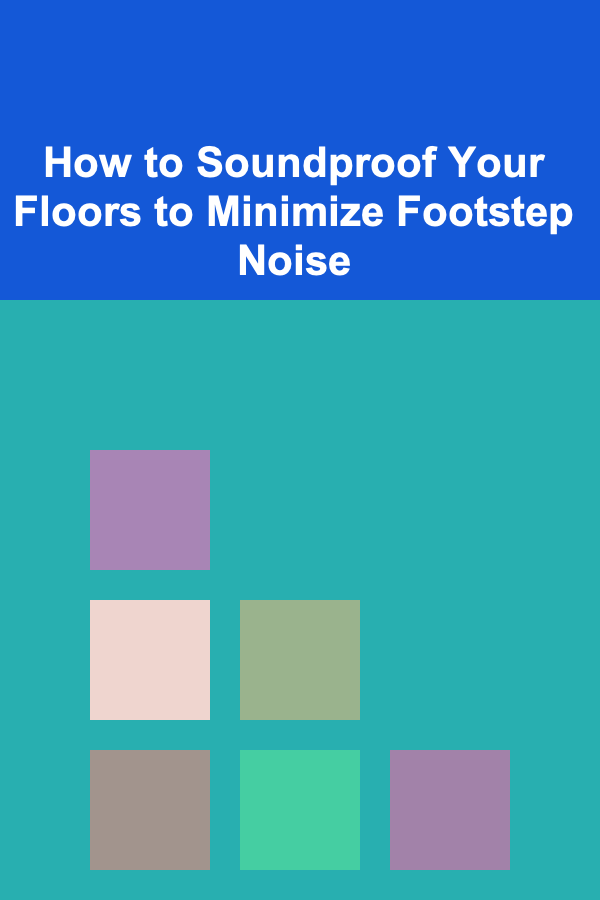
10 Tips for Troubleshooting Your Art Practice To-Do List
ebook include PDF & Audio bundle (Micro Guide)
$12.99$6.99
Limited Time Offer! Order within the next:
Not available at this time

Art practice, whether professional or personal, is a journey full of creativity, experimentation, and at times, frustration. No matter how skilled or experienced you are, there are periods when progress seems slow, inspiration feels distant, or your work doesn't seem to reflect the vision you have in your mind. Having a to-do list can help provide structure, but sometimes, the to-do list itself can become overwhelming or counterproductive. In this article, we'll explore 10 tips for troubleshooting your art practice to-do list to help you stay productive, organized, and motivated.
Break Down Your Tasks into Smaller, Manageable Steps
One of the most common mistakes artists make when creating a to-do list is writing down overly broad or vague tasks. For example, writing "finish painting" on your list can leave you feeling stuck or unsure of where to start. To avoid this, break down larger tasks into smaller, specific steps. Instead of saying "finish painting," you could break it into:
- Sketch the outline.
- Block in base colors.
- Add details to the background.
- Focus on the focal point.
- Final touch-ups and varnishing.
By breaking tasks into smaller steps, you're more likely to feel a sense of progress and achievement with each step you complete. It also makes large, overwhelming tasks feel more achievable.
Prioritize Tasks Based on Importance and Urgency
Artistic growth and practice can easily become chaotic, especially when there are numerous ongoing projects or tasks. When your to-do list feels never-ending, prioritize tasks by importance and urgency. You can categorize them into:
- High Priority/High Urgency: Tasks that need to be completed immediately, like meeting a deadline or fixing a mistake.
- High Priority/Low Urgency: Important tasks that don't require immediate attention but will lead to better long-term results, such as experimenting with a new technique.
- Low Priority/High Urgency: Tasks that need to be done quickly but are not as crucial to your overall artistic goals, like fixing minor errors in a painting.
- Low Priority/Low Urgency: Non-essential tasks, such as organizing your art supplies or browsing for inspiration.
This method helps you focus on what truly matters while not feeling overwhelmed by less critical tasks. Prioritization also ensures you maintain momentum in areas that will lead to artistic development.
Set Realistic and Flexible Deadlines
One of the key aspects of a productive art practice is establishing realistic deadlines, but it's equally important that these deadlines are flexible. Artists often overestimate how quickly they can complete a task, leading to unnecessary pressure and stress. Setting deadlines too far in advance can also create a false sense of security that may lead to procrastination.
To set effective deadlines:
- Allow ample time for experimentation and mistakes. Art is often about trial and error, and creativity cannot be rushed.
- Build in buffer periods for days when inspiration is low or when life's unpredictabilities come into play.
- If possible, make your deadlines self-imposed rather than externally enforced, so you have room for flexibility.
A well-structured, yet flexible deadline helps you avoid the stress of rushing, while still encouraging a consistent work ethic.
Simplify Your To-Do List
Sometimes, the biggest issue with your art practice to-do list is that it's too long or convoluted. A lengthy list can feel overwhelming, leading to procrastination or burnout. Instead of filling your list with every minor task, focus on the essentials:
- What needs to be completed today or this week?
- What will move you forward in your creative journey?
- What tasks are absolutely necessary for your artistic growth?
By limiting the number of tasks on your list, you'll avoid feeling scattered and can focus on what truly matters. A streamlined to-do list helps reduce decision fatigue and keeps you focused on what's important.
Incorporate Breaks and Self-Care
Art practice is demanding, both mentally and physically. Whether you're painting, drawing, sculpting, or working in other media, the repetitive motions and mental focus required can be draining. It's easy to get stuck in the cycle of pushing yourself constantly to create without taking time for rest.
To avoid burnout, make sure to schedule regular breaks and self-care activities. Some ideas to incorporate into your to-do list include:
- Take a 10-minute walk to reset your mind.
- Meditate for a few minutes to refocus.
- Eat nourishing meals that fuel your creativity.
- Do a relaxing hobby that isn't related to art (e.g., reading, cooking).
When you feel physically and mentally rejuvenated, your creativity is more likely to flow freely, and you'll be able to tackle your tasks with fresh energy and perspective.
Review Your Progress and Celebrate Small Wins
In the hustle of daily practice, it's easy to overlook how much progress you've made. However, taking a moment to review your progress and acknowledge your accomplishments is essential for staying motivated and on track.
Regularly check back on your to-do list and reflect on the tasks you've completed. Celebrate the small wins, whether it's finishing a sketch, perfecting a technique, or solving a creative block. This helps reinforce a positive mindset and keeps you engaged with your practice.
You can also keep a progress journal where you record your achievements, thoughts, and creative breakthroughs. Looking back at your growth over time can be an incredibly rewarding experience.
Eliminate Distractions
Distractions are one of the most significant productivity killers. Whether it's social media, emails, or environmental factors, distractions can prevent you from fully engaging in your art practice. When troubleshooting your to-do list, make a conscious effort to minimize distractions.
- Set specific times during the day when you are "off-limits" to distractions, such as turning off notifications on your phone, setting your workspace to "do not disturb," or using website blockers to avoid mindless internet browsing.
- Create a designated art space that minimizes interruptions and is optimized for focus.
- Establish work hours that fit within your daily rhythm to ensure you stay on task.
By creating a distraction-free environment, you'll be able to dedicate more focused time to your art practice, ultimately leading to more progress and fulfillment.
Accept Imperfection and Experiment
Art is inherently imperfect, and one of the most significant hurdles to creative growth is the fear of making mistakes. This perfectionism can make a to-do list feel like a set of strict, unchangeable rules. Instead, embrace experimentation and allow your practice to be fluid and open to new ideas.
- If a task on your to-do list doesn't turn out the way you expected, learn from it rather than viewing it as a failure.
- Experiment with new mediums, techniques, or styles that you've never tried before. Don't be afraid to deviate from your original plan or explore unfamiliar territory.
- Allow yourself to be surprised by the process of creation, even if things don't go according to plan.
By letting go of the need for perfection, you'll give yourself the freedom to explore and create without the pressure of meeting impossible standards.
Stay Accountable with a Support System
Having a support system is crucial for maintaining motivation and accountability. Whether it's fellow artists, friends, family, or online communities, sharing your goals and progress with others can provide encouragement and constructive feedback.
Consider:
- Sharing your to-do list with an art buddy who can check in with you and offer feedback.
- Participating in an art challenge or community project that has deadlines and shared goals.
- Finding a mentor or joining a group of like-minded individuals to discuss your practice and exchange ideas.
Accountability can help you stay focused, but it can also provide a sense of camaraderie and shared purpose that enhances your motivation to keep going.
Revisit and Adjust Your To-Do List Regularly
As your art practice evolves, so will your priorities and goals. It's essential to revisit and adjust your to-do list regularly to reflect changes in your creative journey. If you feel like you're no longer passionate about a certain project or you've discovered a new area of interest, update your list accordingly.
Regularly evaluating your to-do list allows you to make adjustments, refocus your efforts, and avoid sticking to outdated goals that no longer serve you. Flexibility in your to-do list helps you stay aligned with your evolving artistic vision and keeps your practice dynamic.
Conclusion
Troubleshooting your art practice to-do list is an ongoing process that requires awareness, adaptability, and mindfulness. By breaking down tasks, setting realistic deadlines, eliminating distractions, and allowing space for self-care and imperfection, you can keep your artistic practice on track without feeling overwhelmed. Remember, your to-do list is a tool, not a source of stress---it should guide you toward creating, not stifle your creativity. With these 10 tips, you'll be able to create a more effective, sustainable, and rewarding approach to your art practice.

How to Make a Membership Recruitment Checklist for a Religious Organization
Read More
How to Plan Surprise Family Outings for Excitement
Read More
How to Soundproof Your Floors to Minimize Footstep Noise
Read More
How to Turn Your Entryway Into a Welcoming Space Without Spending Much
Read More
How To Use AI Tools for POD Design Inspiration
Read More
How To Build a Strong Social Media Influencer Network
Read MoreOther Products

How to Make a Membership Recruitment Checklist for a Religious Organization
Read More
How to Plan Surprise Family Outings for Excitement
Read More
How to Soundproof Your Floors to Minimize Footstep Noise
Read More
How to Turn Your Entryway Into a Welcoming Space Without Spending Much
Read More
How To Use AI Tools for POD Design Inspiration
Read More